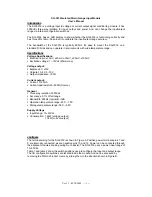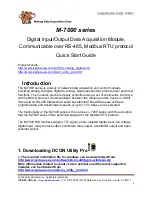
Saia-Burgess Controls AG
User Manual Standby System
│
Document 27-645
│
Edition E
NG 02
│
2017-04-26
Programming
Diagnostic
2-24
2
2.6.2
CPU1 Redundant Program
CPU1 of the Active device runs the Redundant program, and its process image
must be synchronized with the process image of CPU1 in the Standby device. This
means that no features that are asynchronous, use non-process data or com-
munications stacks can be used on CPU1. Only the process image can be used
for incoming and outgoing data. Because of this, there are some restrictions on
CPU1’s redundancy program.
●
The CPU1 program runs only on the ACTIVE PCD and controls the remote IOs
via PCD3.T668 RIOs.
●
The redundant program is always the same on both PCDs.
Restrictions
●
CPU1 cannot use any communications (S-Bus master, Modbus, BACnet, FTP
etc.), except ESIO (for
●
the RIO network) and data synchronization.
●
CPU1 has no direct access to IO modules or Flash memory modules.
●
Communications with a SCADA system or other external system can run only
on CPU0. But commands and data can be transferred to CPU1 using
●
The CPUs can access each other’s data only by using
.
●
CPU1 cannot run Graftec programs, they cannot be synchronized.
●
FBox limitations: No communications FBoxes can be used in CPU1’s program.
●
A PG5 project can contain only one pair of redundancy devices, a new project
is needed for each pair.
















































